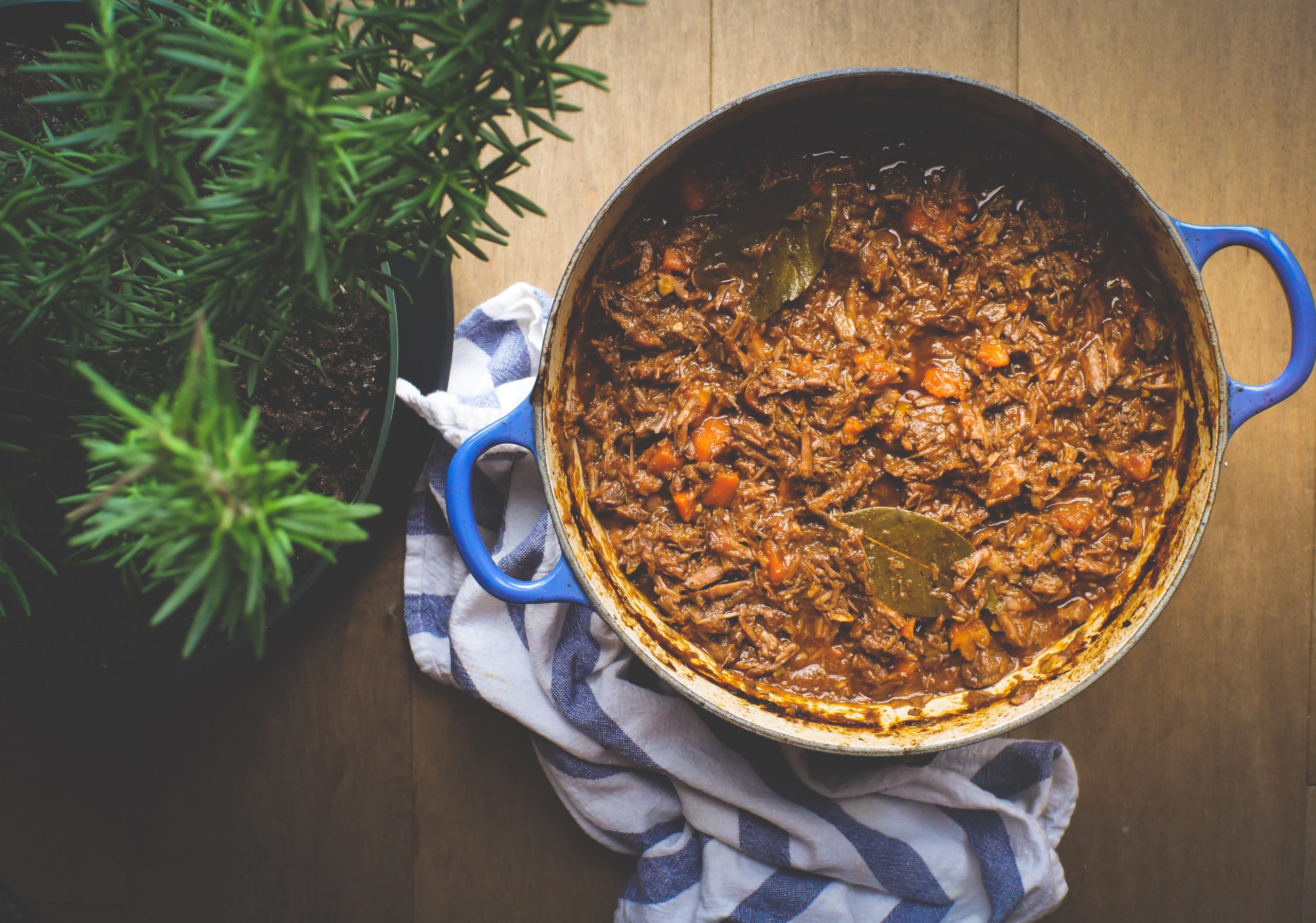
Servings: 12 servings
Ingredients
- 1 moose shoulder cut 3-4 lbs.
- 2 large onions diced
- Tomatoes. I used can but these are your options: 1 450g can, 5 medium fresh, or 7 medium smoked tomatoes
- 2.5 cups diced carrots
- 2 cups diced celery
- ½ head of garlic minced
- ½ cup fresh diced lovage optional but recommended
- ¾ cup of diced pancetta
- 1 cup red wine
- 3 tablespoons tomato paste
- 3 bay leaves
- 2 tablespoons off butter
- 1.5 cups beef bone broth
- Salt & freshly ground pepper
- ½ teaspoon of each: coffee grounds cinnamon, nutmeg
- 1 tablespoon Worcestershire Sauce or Red Boat fish sauce
- 1 tablespoon coconut amino acids or Soy or Tamari sauce
Instructions
- Allow 3 days to dry brine the moose shoulder. Use kosher or sea salt, keep your hand about 6-10 inches above the shoulder, and liberally salt the flesh until it is coated but not crusted with salt. You can avoid over-salting by dividing your salt into a ¼ cup. How much you use will depend on the size of your cut. Do not rinse off the salt after the 3 days and do not add anymore salt into the recipe until you have tasted it at the end.
- Cut the shoulder into approximately 1-inch cubes. If there is bone present, don't worry, just cut away as much as you can. The meat will be shredded off of it at the end.
- In a large heavy-bottomed pot like the enameled French oven pictured, over medium heat, add the diced pancetta ad allow the fat to slowly render out. Remove and set aside.
- Turn the heat up to medium-high and add about one-third of the cubed moose meat, do not crowd the meat in your pan. If you need some more fat in the pan, use a bit of ghee, lard, tallow, or olive oil. We will only be browning some of the meat to get that fond.
- Allow the meat to get a nice sear, flipping and turning as necessary. Remove and set aside.
- Turn the heat down to medium, add the diced onion, scrape up any bits of fond and allow the onion to become transculescent (about 10 minutes).
- Add the carrot, celery, and fresh lovage (if using lovage). Stir occassionally and allow to become lightly browned at the edges.
- If you need to add more fat during the vegetable stages, add some throughout the cooking process.
- Add the tomato paste, stir for 1-2 minutes, letting it caramelize.
- Add the garlic, stir until fragrant (about 1 minute).
- Add all of the cubed moose meat,the wine, tomatoes, the beef bone broth, the cooked pancetta.
- If you have moose shoulder bone fragments with meat attached, add that too.
- Add the bay leaves and some freshly cracked black pepper.
- Turn the heat up to medium-high until the liquid starts to boil, then reduce to a simmer on medium-low, stir to combine. The liquid does not have to entirely cover the moose meat.
- Partially cover the pot.
- Continue to simmer slowly for anywhere from 3-5 hours, stirring occassionally, like every 45 minutes or so.
- After 3 hours, check the meat for tenderness and taste. If it is suitably tender, add the coffee grounds, cinnamon, nutmeg and stir in the worcestersire or fish sauce and the cocoonut amino acids or soy/tamari sauce. Cook for 30 minutes more and taste again, adding salt only if necessary to taste.
- If it is not tender, allow it to continue simmering, checking every 30 minutes and then repeating the above step. Do not add any extra salt until the meat has tenderized and then only salt to taste.
- Once the meat is tender, the ragu is finished. Remove it from the heat and set it aside until it comes to a temperature that can be safely touched by your bare or gloved hand.
- Wearing disposable food-safe latex gloves, or using your bare (washed) hands, shred the meat cubes and any meat from any additional moose bones in the pot until it resembles the texture in the picture. Dispose of any bones once the meat is off.
- When all the meat has been shredded, stir your sauce thoroughly, and place it over medium heat to warm up again. At this point you may want to add a little more beef stock or even water to the pot if sauce is too concentrated.
- Serve your sauce as desired, although you may want to wait until the next day when the flavours will be greatly improved.
Notes
You can stir in peas at the very end of cooking if you wish.
Tried this recipe?Let us know how it was!